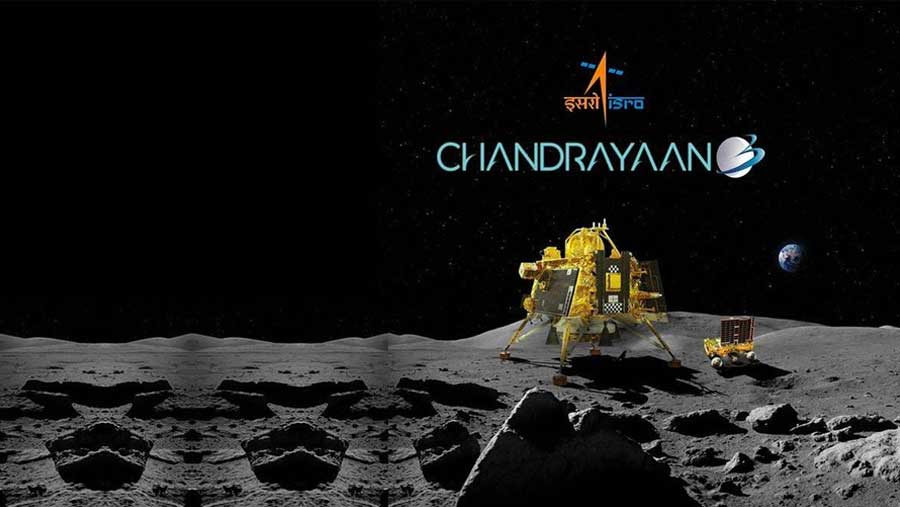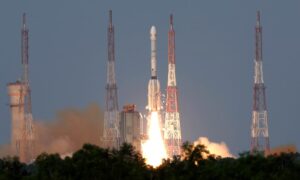
Picture : ISRO/ X
Ice could be present at more locations right beneath the Moon’s surface at the poles than previously thought, a study of data collected by the Chandrayaan-3 mission has suggested.
Large, yet highly local, changes in surface temperatures can directly affect the forming of ice, and looking into these ice particles can reveal “different stories about their origin and history”, lead author, Durga Prasad Karanam, Faculty, Physical Research Laboratory, Ahmedabad told PTI.
This can also tell us about how ice accumulated and moved through the Moon’s surface over time, which can provide insights into the natural satellite’s early geologic processes, he said. The findings are published in the journal Communications Earth and Environment.
The Chandrayaan-3 mission, launched by the Indian Space Research Organisation (ISRO) from Bengaluru, achieved a soft landing near the Moon’s south pole on August 23, 2023. The landing site was named the ‘Shiv Shakti Point’ three days later on August 26.
For this study, the researchers analysed temperatures measured at and to a depth of 10 centimetres beneath the lunar surface. Measurements were taken by the ‘ChaSTE’ probe on-board the Chandrayaan-3’s Vikram lander.
The lander touched down at the edge of the Moon’s south pole region, about 69 degrees south latitude.
At this landing site — “a Sun-facing slope angled at six degrees” — the authors found that temperatures peaked at about 82 degrees Celsius and dropped to -170 degrees Celsius in the night.


















